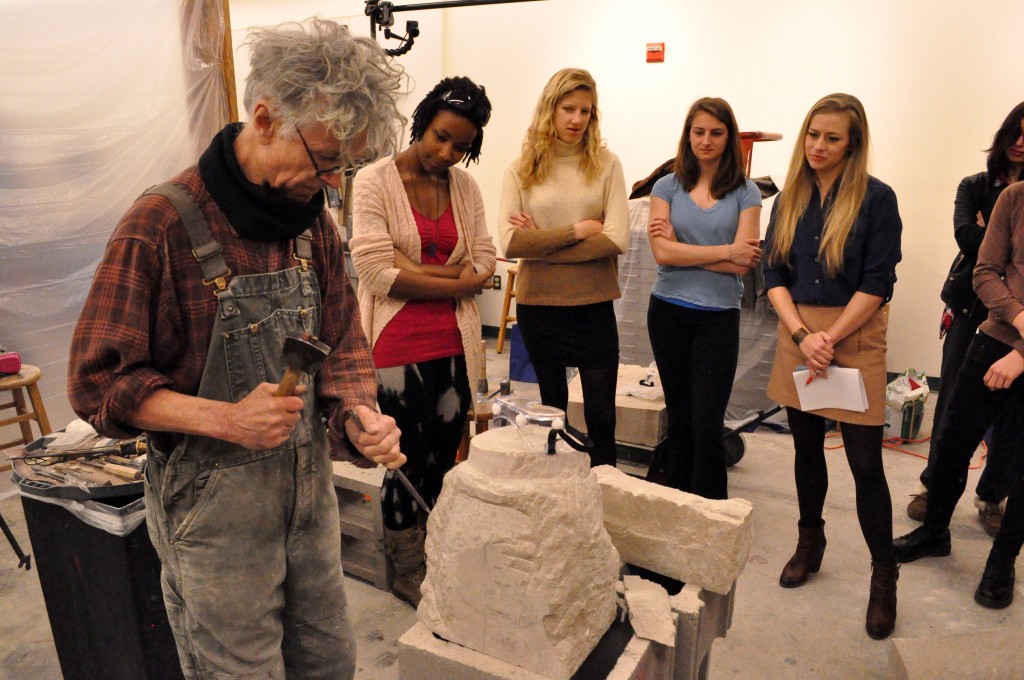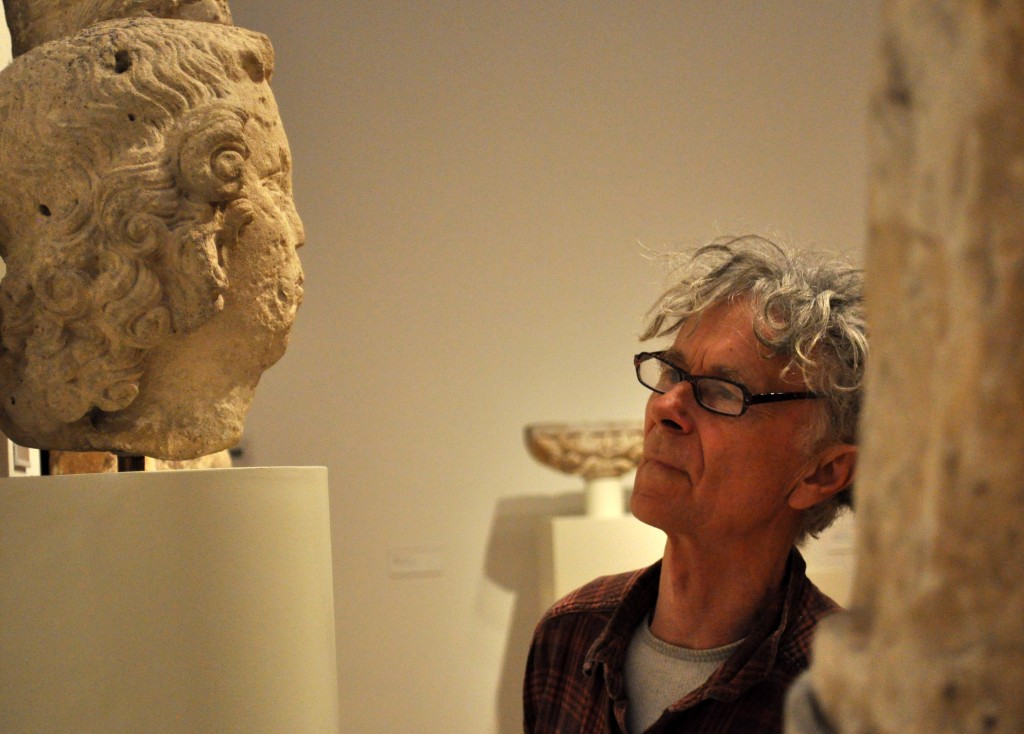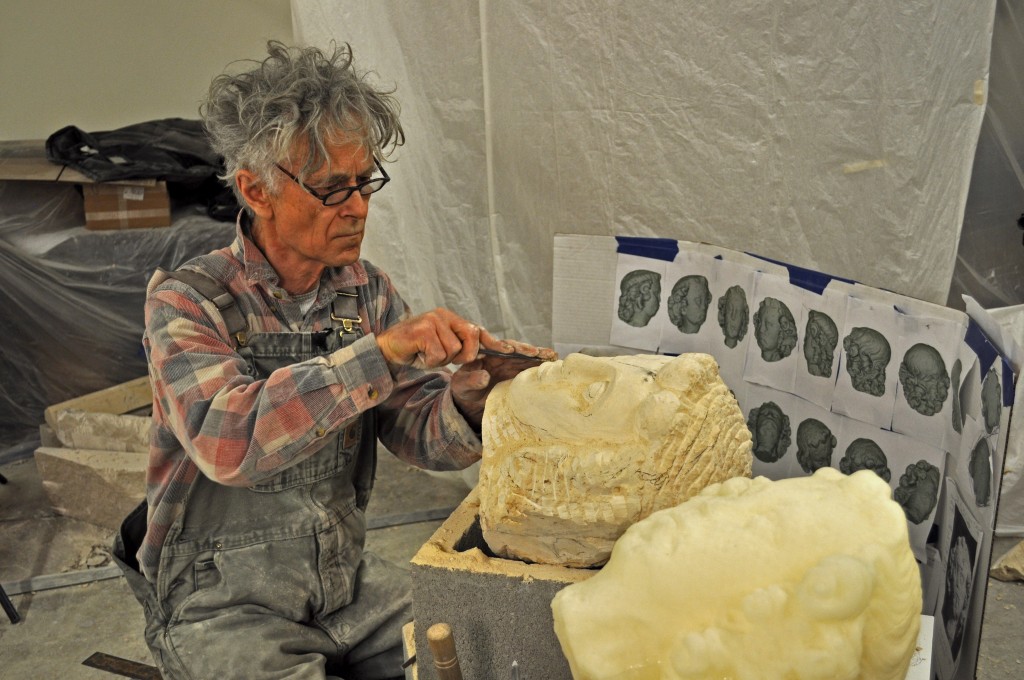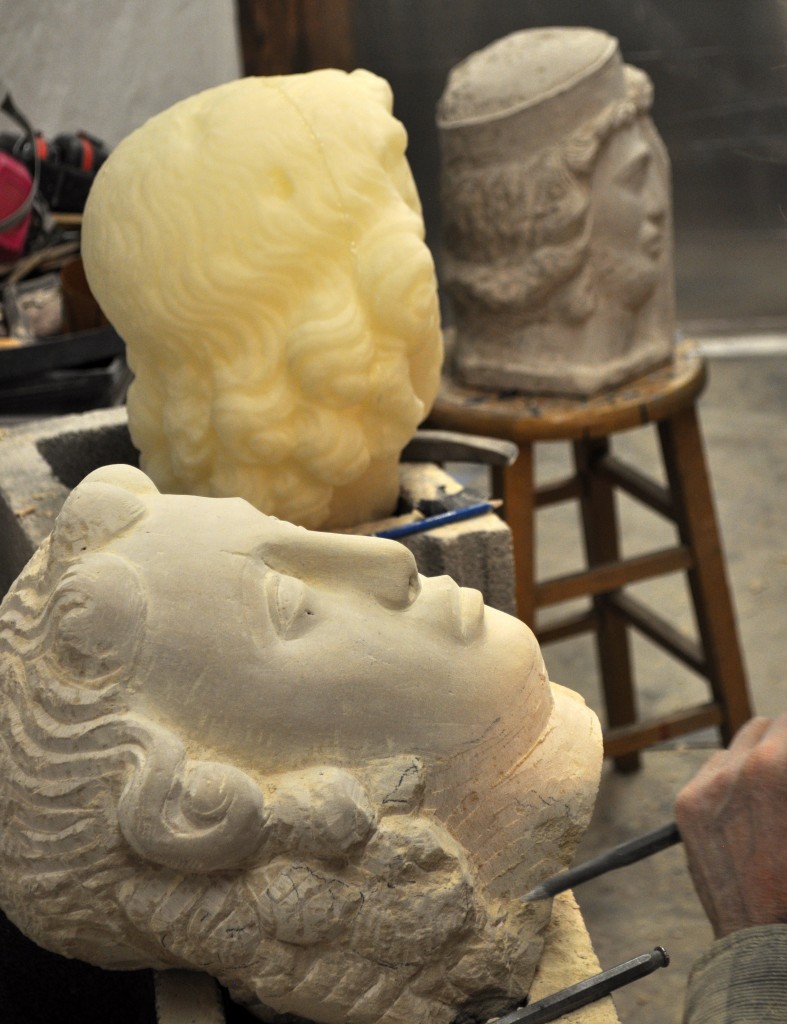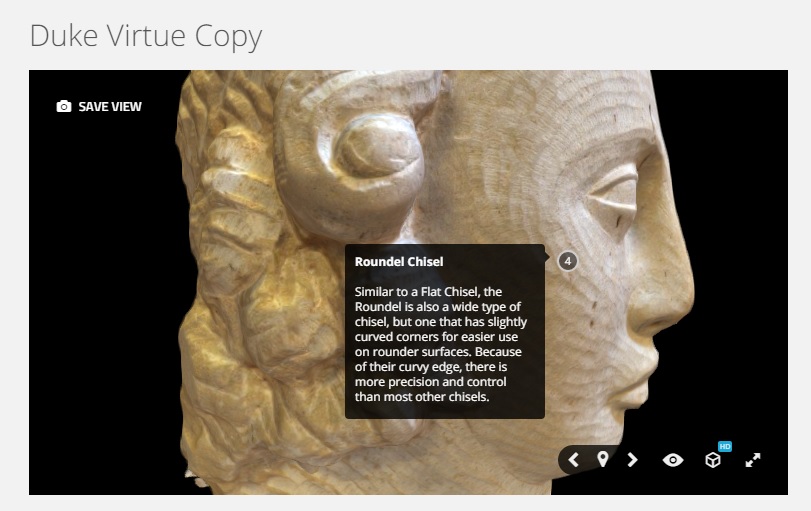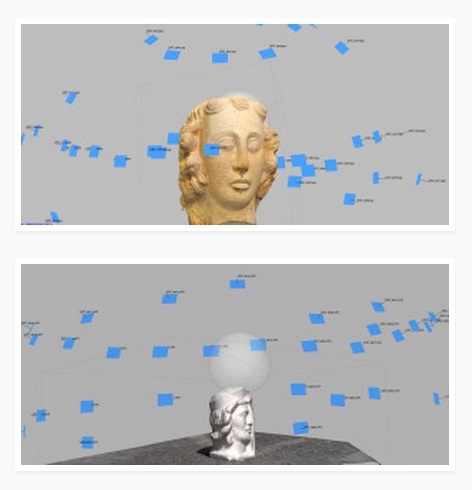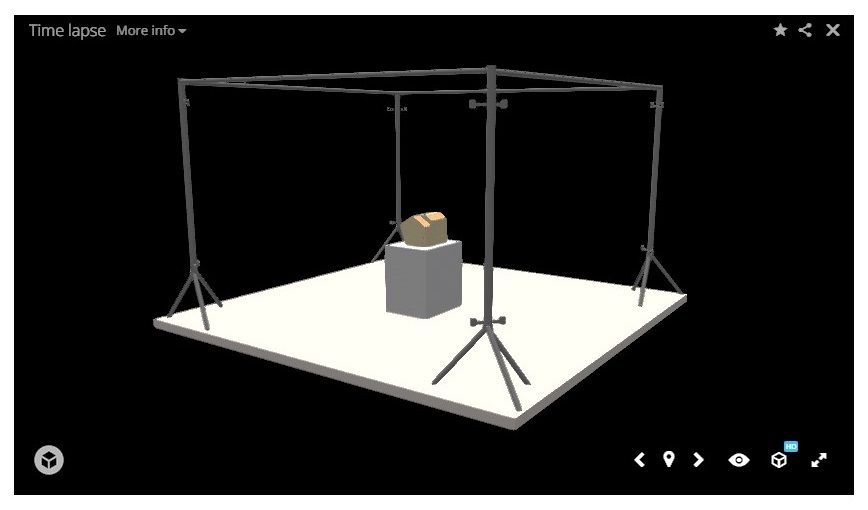The Wired! lab at Duke launched in 2009 to explore the potential of digital visualization technologies for the study of material culture, particularly in art, architectural, and urban history. This Digital Humanities scholarship transforms both teaching and research, and provides new methods for communicating knowledge to a broad public.
This project, part of the Wired! Lives of Things initiative, used a number of digital tools to document and research the process of stone carving. Inviting master stone carver Simon Verity to participate in an artist’s residency, the lab and its members aimed to better understand the making and later life of the Head of a Virtue from Notre Dame.
The annotated 3D model on the “Virtue 3D Model” page, was created through a process called photogrammetry, which aligns, or stitches, a series of digital photos together (similar to panoramic photographs) to form a geometric shape and texture. Previous Wired! Lab 3D models were created by laser scanning techniques, one of which is the original model of the Head of a Virtue. From these models, a 3D printed copy of the Virtue was made on Duke’s campus and used for reference during Verity’s work. The use of 3D models within museum exhibitions offers viewers new perspectives and ways to learn and interact with art and artifacts.
- Photo by Jessica Pissini
- Students with Simon Verity, photo by Jessica Pissini
- Students with Simon Verity, photo by Jessica Pissini
- Simon Verity in the studio, photo by Jessica Pissini
- Simon Verity in the Nasher, photo by Jessica Pissini
- Simon Verity in the studio, photo by Jessica Pissini
- Stone Carved works and a 3D printed model, photo by Jessica Pissini
- Screenshot of an annotated 3D model
- Screenshots of the photogrammetrical 3D models
- Screenshot of the time-lapse capture setup in the studio space

